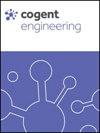评价建筑维修实践的成熟度模型:一种模糊dematel方法
IF 2.5
Q2 ENGINEERING, MULTIDISCIPLINARY
引用次数: 0
摘要
本研究的目的是开发一个基于成熟度维度或标准和kpi的绩效衡量模型,该模型是通过广泛的文献综述确定的。采用决策试验与评估实验室(DEMATEL)方法,通过分析12个标准/维度和51个关键绩效指标,建立了成熟度模型。通过与专家的焦点小组讨论,分析每个标准和KPI的重要性。采用模糊方法解决专家判断的模糊性和不确定性。采用模糊DEMATEL法对数据进行分析,计算R+C和R-C值。为了可视化复杂的关系,确定建筑物维护的最重要标准并分析它们的相互影响,通过映射所有坐标系创建了因果关系图。因此,C8(文化和领导)、C1(维护政策和策略)、C6(设计寿命)和C5(维护信息管理)被分配到原因组。这四个标准被确定为最关键的标准,因为它们可以影响在效果组中分类的其余标准。(R-C)为负值时,将C2、C3、C4、C7、C9、C10、C11、C12归为效应组。基于模糊DEMATE结果的标准和kpi的加权平均值,建立了一个五级层次模型来衡量成熟度绩效。目前的模型涵盖了多个测量维度/视角,作为建筑物维修成熟度的测量标准。该模型对于决策者识别弱点和优势,并在持续改进方法中逐步改进弱点非常重要。新模型可以帮助决策者确定维护成熟度的当前状态,并计划行动,以提高效率和有效性,以创造可持续和生产性的建筑资产。本文章由计算机程序翻译,如有差异,请以英文原文为准。
Maturity model for evaluating building maintenance practice: A fuzzy-DEMATEL approach
The purpose of this study is to develop a performance measurement model based on maturity dimensions or criteria and KPIs identified through an extensive literature review. Using the Decision-Making Trial and Evaluation Laboratory (DEMATEL) method, a maturity model is developed by analyzing 12 criteria/dimensions and 51 KPIs. The importance of each criterion and KPI is analysed through focus group discussions with experts. A fuzzy method is used to resolve the fuzziness and uncertainty of the expert judgments. The fuzzy DEMATEL method is used to analyse the data, and the values of R+C and R-C are computed. In order to visualize the complex relationships, identify the most important criteria of building maintenance and analyse their mutual influence, a cause-effect diagram is created by mapping all sets of coordinates. Accordingly, C8 (culture and leadership), C1 (maintenance policy and strategy), C6 (design life), and C5 (maintenance information management) are assigned to the cause group. These four criteria are identified as the most critical criteria because they can influence the remaining criteria categorized in the effect group. For negative values of (R-C), C2, C3, C4, C7, C9, C10, C11, and C12 are categorized in the effect group. A five-level hierarchical model was developed to measure maturity performance based on the weighted average of the criteria and KPIs of the fuzzy DEMATE outcomes. The current model covers multiple measurement dimensions/perspectives as a measurement criterion for building maintenance maturity. The model is important for decision makers to identify weaknesses and strengths and incrementally improve the weaknesses in a continuous improvement approach. The new model can help decision makers determine the current state of maintenance maturity and plan actions to improve efficiency and effectiveness to create sustainable and productive building assets.
求助全文
通过发布文献求助,成功后即可免费获取论文全文。
去求助
来源期刊

Cogent Engineering
ENGINEERING, MULTIDISCIPLINARY-
CiteScore
4.00
自引率
5.30%
发文量
213
审稿时长
13 weeks
期刊介绍:
One of the largest, multidisciplinary open access engineering journals of peer-reviewed research, Cogent Engineering, part of the Taylor & Francis Group, covers all areas of engineering and technology, from chemical engineering to computer science, and mechanical to materials engineering. Cogent Engineering encourages interdisciplinary research and also accepts negative results, software article, replication studies and reviews.
 求助内容:
求助内容: 应助结果提醒方式:
应助结果提醒方式:


